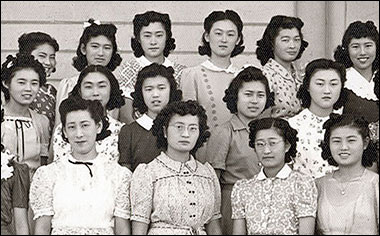
How do I research a building or neighborhood?Exploring the history of the building or neighborhood in your community can be engaging and at the same time bring to life the history of the place you live or the community you have a connection to. There are web-based sources to help with local history research such as local libraries and historical societies that sometimes offer digital collections on-line. A useful introduction to sources for researching neighborhood history can be found at "Nearby History" by the University of Washington. What resources are available?DIRECTORIES. Published directories, similar to a contemporary telephone book, are one of the best tools for getting a sense of a historic Japantown. Most public libraries or local historical societies have copies of city or county directories that often list Japanese American businesses and residences. However, these directories don’t provide as complete a picture of historic Japantowns as those published by Japanese American newspapers. Compared to research focused on other immigrant groups, documenting historic Japantowns has an unusually comprehensive foundation in the annual directories that were published by Japanese American newspapers. Our surveys relied on directories published in 1940-41 by the Los Angeles-based Rafu Shimpo and the San Francisco-based Japanese American News. Both of these publications are statewide in their scope, although there are slight differences in listings for individual communities, presumably due to the papers connections in different regions of California. The Japanese American newspaper directory listings are remarkably detailed and include businesses, community organizations, churches and temples, and residential listings. For most Japantowns these listings appear by street address, which makes identifying these resources relatively easy unless the city has renamed or renumbered streets. Click here to see an example of listings for Lodi's historic Japantown. Copies of these directories can be found at the California State Library in Sacramento, at the Hirasaki Resource Center at the Japanese American National Museum in Los Angeles, and the Japanese American National Library in San Francisco. NISEI OR OTHERS WHO REMEMBER THE HISTORIC NEIGHBORHOOD. Finding a Nisei with sharp memories of their childhood neighborhood is often the best way to start to connect Japanese American history with specific sites. Having them guide your "tour" of a place can reveal information and insights — the "sense memories" that make the past come alive. If you can’t find a Nisei to interview, other community members may have memories of Japanese American friends and neighbors, and Nikkei-owned businesses or cultural institutions. Because listings for rural communities use Post Office boxes or Rural Route rather than street addresses, surveys in these Japantowns are more difficult and Nisei (or other long-time residents) are often critical to uncovering these historic resources. Yet all memory is fallible and it is best to find another source that corroborates information like about "what happened where." HISTORIC MAPS. Historic maps, often found in local libraries and archives, can also be helpful, especially in determining the contemporary name for a historic rural route. Sanborn fire insurance maps are an especially invaluable tool for researching an individual building or a Japantown. These large-scale maps depicted the residential, industrial and commercial areas of cities throughout the United States from the 1860s through the 1960s. Because they were developed to help fire insurance companies determine the degree of risk associated with a particular property they hold detailed information about individual buildings and their historic uses. Corrections and amendments were made periodically. Original Sanborn maps can often be accessed at local libraries or historical societies, and digital collections of Sanborn maps can be accessed through numerous library websites (however, you usually have to enter a valid library card number for this service). ABOUT THE PRESERVATION TOOLKIT HOW DO I RESEARCH A BUILDING OR JAPANTOWN NEIGHBORHOOD? HOW DO I CONDUCT AN ORAL HISTORY INTERVIEW? WHAT IS HISTORIC PRESERVATION? WHAT IF A HISTORIC RESOURCE IS THREATENED?
ARCHIVAL COLLECTIONS. Published resources that focus on the history of specific Japanese American communities are relatively rare. For a detailed bibliography on California Japantowns, click here. Local libraries, museums and historical societies often hold publications and archival material associated with neighborhoods, businesses, ethnic and immigrant communities, schools, churches, and other aspects of local history that intersect with a Japantown. These may be found in clipping files organized by topic, pamphlets and commemorative publications, and editions of the local newspaper. Collections of historic photographs, which sometimes include images organized by street view, can be extremely useful. Reference librarians, archivists and other staff can be enormously helpful in navigating these collections. CENSUS RECORDS. The U.S. Census has detailed information about the occupants of individual addresses, including place of birth, native language, age, occupation etc. Census data is now accessible on-line through various sources, both commercial (such as Ancestry.com) and public (some libraries subscribe to services that provide census records). PUBLIC RECORDS. Deeds and building permits, which are often a foundation for documenting historic resources, are less useful in documenting Japantowns because of the Alien land Law restrictions on property ownership affecting many Japanese immigrants. However, some Issei were able to purchase their property prior to the 1913 legislation, or placed it in the names of their American-born children or specially created corporations that will appear in records generally found in county or state archives.
PHOTOS TOP L-R: Volunteers from the Preserving California's Japantowns mounted a local history exhibit and tour of Walnut Grove's Japantown, 2007; Kaz Hibino, George and Janet Higashi and Fred Oshima shared memories of Japantowns in Salinas and Lodi with Preserving California Japantowns' project manager, Jill Shiraki. BOTTOM-RIGHT: Photo detail of French Camp Girls' Club. Photo collection of Henry Isakari |
||
